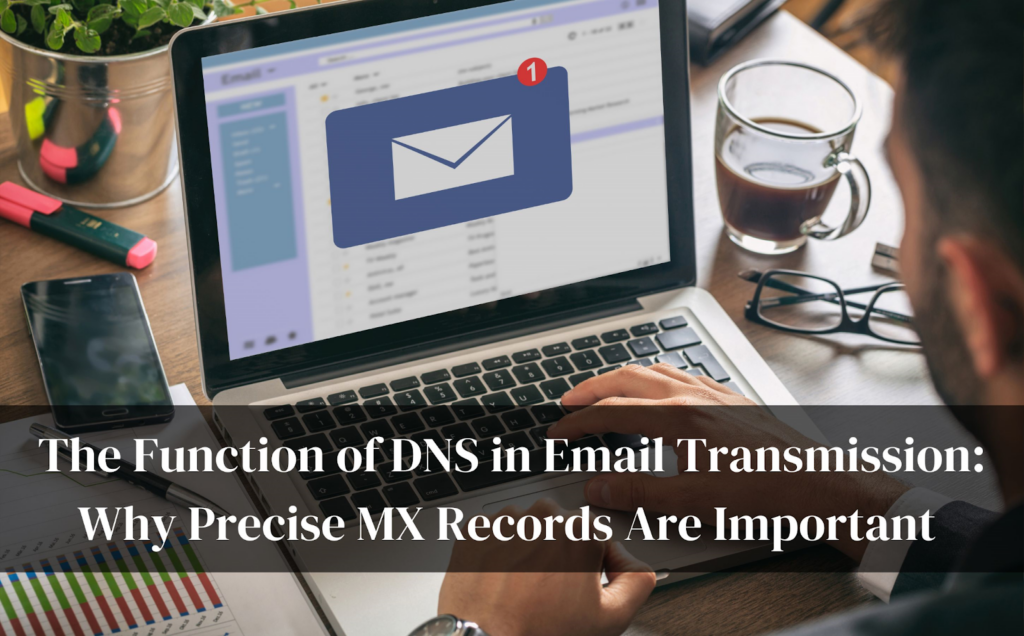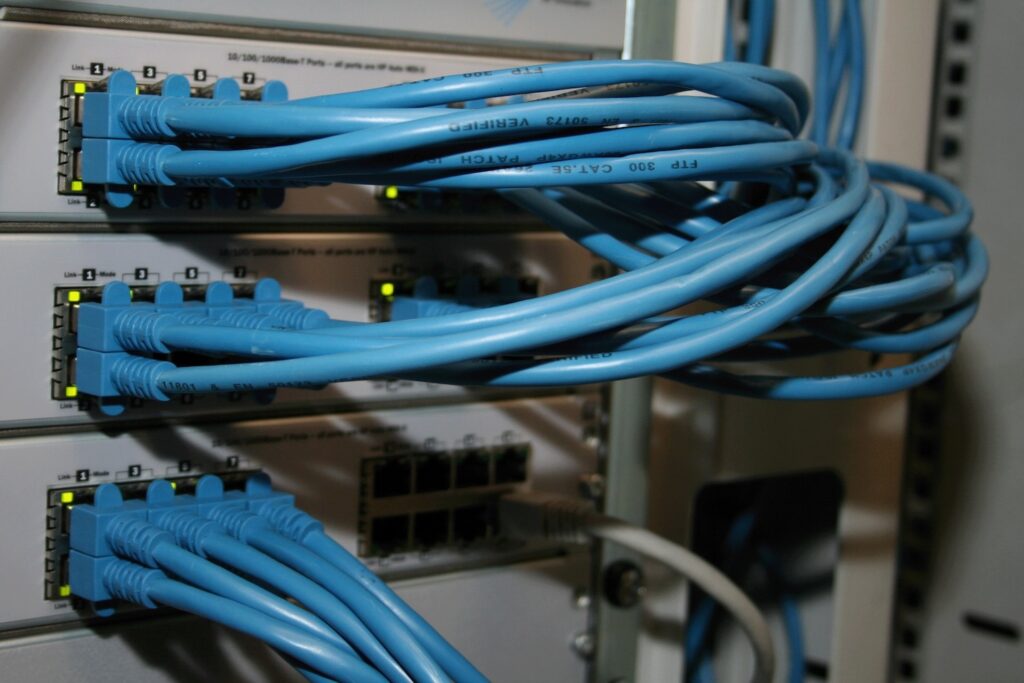
The significance of keeping up a strong web existence in the dynamic world of the internet, in which email correspondence is the mainstay of internet conversation, can’t be ignored.
The Domain Name System entries that are linked with your website, especially the MX (Mail Exchanger) entries, are the cornerstone of the digital image. These are some of the most important types of entries for maintaining email connections. Effective email transmission requires correct and well-set MX records.
In this blog, we will discuss the importance of MX records and the way they affect message transmission, highlighting the requirement for correctness and the function of a DNS Record Checker in guaranteeing this preciseness.
The MX Records Foundation
One essential part of the Domain Name System (DNS) is MX records. They identify the mail hosts that are in charge of accepting mail messages on behalf of a domain. The transmitting host looks up the DNS information whenever a client delivers an email to the domain to determine which mail host should handle the message’s delivery.
MX records are made up of 2 primary parts:
Priority: This is a numerical number that determines the sequence in which several MX entries must be utilized when delivering an email. Priorities are greater for smaller values.
Mail Server Hostname: This refers to the Internet Protocol (IP) address or domain name of the mailing servers that handle email processing.
Here is an example of an MX record:
Priority: 10
Mail Server Hostname: mail.example.com
Several MX entries with different priorities can be set in a standard DNS query. By acting as a backup system, these numerous MX details guarantee that messages will be sent to the nearest accessible server in case the main mail server is inaccessible.
The Impact of Misconfigured MX Records on Email Transmission
Having correct MX records is essential for consistent email transmission. Several issues with sending messages might occur from old or improperly set MX records, such as:
Email Rejections
When the sender’s host cannot locate a legitimate mailing server to transmit the message, it might lead to email bounces back caused by inaccurate MX records. This may be annoying for both the sending party and the receiver.
Lateness in Email Transmission
Transmission of emails may be delayed if the MX records are not updated or incorrectly set. This may affect teamwork and conversation in a professional setting, which might reduce production.
Lost of Emails
When the MX data fails to properly direct to an active mailing server, messages might be missed in extreme situations. It may cause negative effects, particularly if crucial communications and client queries do not get a response.
Fraud and spamming issues
Safety risks brought forth by faulty MX details may make it easy for attackers to steal or reroute the messages. This allows fraud and scams to take place.
The Significance of Accuracy in MX Records for Smooth Professional Discussion
Precise MX records are essential to the smooth performance of emails in the context of company affairs. Since accurate MX files are the foundation of safe and effective interaction ways, companies need to give them top priority. Below are important factors why organizations should pay close attention to the setup and management of their MX data:
Interaction with customers
Emails become a vital tool for business-to-client and supplier communication. Precise MX data ensures rapid and dependable delivery of essential information.
Client service
A lot of companies use email for client service. Any interruption in the email-sending process may cause client queries to be answered more slowly, which may affect the client experience.
Worker Efficiency
Email interaction inside the company is essential for teamwork and production. Correct MX records contribute to the seamless delivery of inside communications.
Information Safety
A company that has false MX data may be at risk of email-related dangers, such as fraudulent emails and illegal use of confidential data.
Brand Maintenance
Continued problems with email transmission might damage a company’s digital image. Consumers can think the company is untrustworthy, which could cause them to lose faith in it.
How to Verify the Correctness of MX Records using the DNS Record Checkers
It might be difficult to keep proper MX records, particularly for companies that manage several domains and subdomains. The DNS records checkers can be beneficial in this situation. The task of handling and checking DNS entries, especially MX records, is made easier with the use of a Checker.
The following are some ways that a DNS Record Checker can assist in making certain that MX records are accurate:
Records Verification
MX records may be routinely checked by DNS Records Checkers to ensure they are accurate and correspond to market norms. It points out differences and offers suggestions for fixing them.
Records Tracking
Tracking functions that periodically verify the performance of the MX data are frequently included with those services. You will be informed right away if there are any problems so you can take the necessary actions.
Warnings and Announcements
To help you remain at the forefront of any possible issues with email transmission, DNS Record Checkers may send warnings and reminders whenever MX records require correction.
An easy-to-use interface
Usually, they provide easy-to-use interfaces that facilitate the management and configuration of MX data for people with different degrees of technological proficiency.
Past Information
You may monitor modifications to your MX records over the years by using one of the several DNS record-checking tools that retain past information. For audits and solving problems, this may be quite helpful.
Interaction with DNS Management Services
It might be easier to make the essential modifications to MX records when using those Checkers that smoothly interact with DNS managing techniques.
Typical Errors in MX Record Setting
Although proper MX records are crucial, frequent errors might cause problems with sending emails. The leading MX records setup issues are shown below, so stay away from them:
Inaccurate Priority Numbers
Email transmission may be affected if MX records have the wrong priority values assigned to them. Making sure that smaller values indicate more importance is vital.
Mistyped Domain names
Email rejections can be caused by misspellings in the mail server address. To prevent this problem, make sure the domain names are spelled correctly.
Omitted or Unnecessary MX Records
Deliveries may be affected by omitting MX records or by duplicate MX records with similar status (priority value). Verify that each record must be created and set up properly.
Expired Records
Delivering emails slowly might result from not updating MX records while switching mail servers or providers of email services.
Inadequate Subdomain Management
In case you utilize subdomains (like support.yourdomain.com) for certain functions, make certain that MX records are set up correctly for every subdomain.
Configuration of Safety
Your electronic mail system may be vulnerable to attacks if safety precautions for MX entries are neglected. Take into account DMARC, DKIM, and SPF data and employ appropriate security methods.
Conclusion
The importance of MX data consistency in the realm of internet conversation can’t be overstated. Email communications are transmitted safely and efficiently due to those details, which act as a vital gateway between transmitters and receivers. Proper MX entries are especially important for organizations, as effective email interaction is essential to everyday activities.
A DNS Record Checker could serve as an extremely helpful application for maintaining correct MX entries and guaranteeing effective email transmission. These technologies streamline the MX data managing procedure by offering functions for notifying, tracking, and verification to ensure the seamless operation of the mail interaction.
The post The Function of DNS in Email Transmission: Why Precise MX Records Are Important appeared first on noupe.
